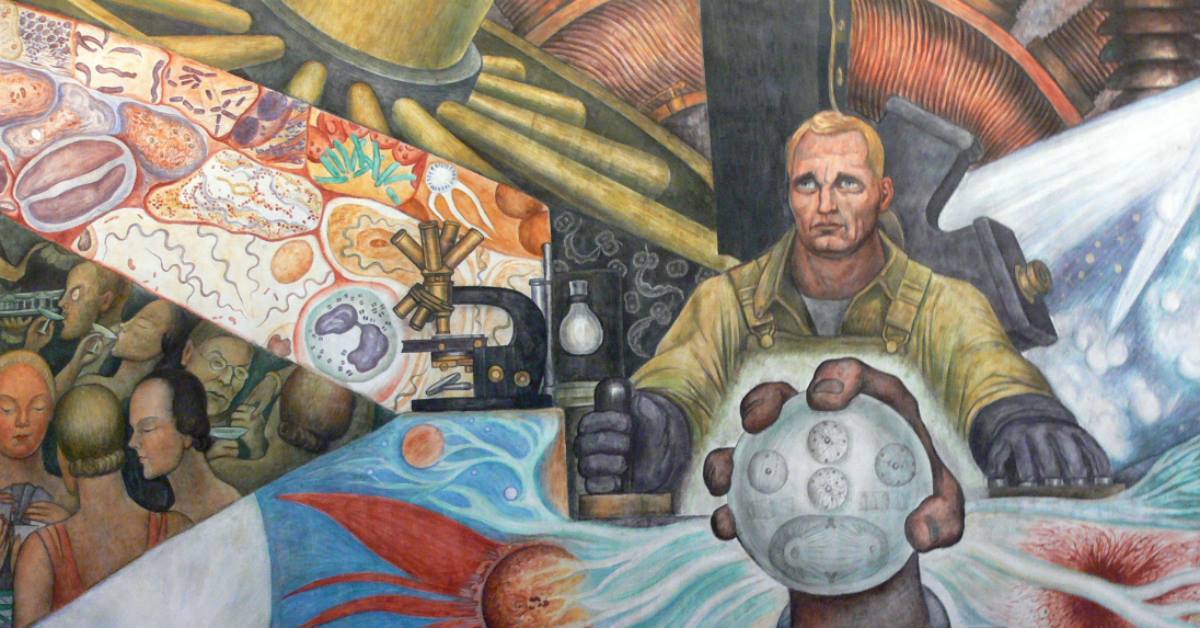IoT: from smart bulbs to advanced manufacturing technologies

If you ask people on the street what the Internet of things is, the definition will probably reveal every hundredth, if not thousandth. “Smart home”, “smart refrigerator”, “smart vacuum cleaner” or “power outlet” - everyone has heard about this, but few people know how everything works. But the topic is not at all new.
Recall the year 2010, when everything around was flooded with advertising banners and articles about cloud storage, automatic telephone exchanges and other amenities that greatly simplify life. A new technology appeared, and it was necessary to educate people how and why to use it.
Now no one needs to explain what a “cloud” in IT is. But about the Internet of Things (Internet of Things, IoT), many still have a lot of questions. Should laptops and smartphones be included in this concept? How is automation different from IoT? How can a small company or start-up launch its IoT project?
#tceh, IIDF and StartTrack gathered market participants at the meeting “Early Birds: Startups in the field of IoT”, where experts Alexander Belotserkovsky (Microsoft) and Andrey Bezrukov (GS Group) talked about the latest trends in the field of the Internet of things.

Alexander Belotserkovsky, Microsoft Strategic Technology Expert
The internet of things begins with things
These include smartphones, laptops, tablets, and other devices connected to the Internet and the information that accumulates when they are used. There are not many companies that store user data for a really long time - not a year, three or five, but at least 20 years. It is in these arrays that the future of technology is laid. To understand how this works, it is worth remembering how it all began.
The first IoT device appeared 20 years ago at the Massachusetts Institute of Technology, where the vending machine was connected to the Internet. The next 15 years they remembered the Internet of things from time to time, but it didn’t come to some kind of active action.
What has changed and given impetus to the rapid development of the Internet of things?
- Significantly reduced the cost of components. Manufacturers work, try to make them even cheaper, and the choice is even greater.
- Communications also continue to get cheaper. By the way, in Russia, with the penetration of the Internet, things are pretty good, even compared to many other countries, which increases the opportunities for the development of IoT.
- The data processing process, which includes many stages (storage, processing, analytics, etc.) becomes more accessible. A key innovation is the emergence of cloud technologies, which provide almost unlimited possibilities for data storage and processing.
- The proliferation of smartphones has created an ecosystem for managing various devices and platforms, and mobile Internet - the ability to remotely access devices.
What is the development cycle for the Internet of things?
The basis of any IoT solution is sensors and software for managing and processing data. The user presses a button and performs an action. This data enters the repository and becomes the basis for machine learning within the platform. Big Data has a huge number of solutions for analytics and visualization - Microsoft has Power BI. The received data is sent to the sensors as feedback, and the cycle starts again.
Large IT corporations, in particular Microsoft, provide platforms on the basis of which other companies (including startups) can create solutions for end users or their own platforms. This is one of the most promising areas in IoT: according to McKinsey forecasts, by 2020, b2b solutions will generate 70% of the market. And the IoT market itself, according to Gartner, will reach $ 1.7 trillion.

Andrey Bezrukov, Director of Strategic Marketing, GS Group
Russia may well become a platform for the production of IoT solutions that are in demand both domestically and around the world, primarily due to one of the best telecommunication infrastructures in the world built in recent years.
In addition, in Russia there are now quite a lot of unloaded production capacities. Given the devaluation of the ruble, production in the country is comparable in cost to production in China. True, the infrastructure lags far behind: there are stories of Russian companies that tried to establish local production, but in the end it turned out to be easier to turn to the Chinese Foxconn plant. Nevertheless, there are prospects.
What to produce?
Worldwide, the production of IoT solutions is divided into two categories.
- Non-production solutions are b2c devices, such as smart watches or smart homes, as well as b2b solutions: smart farms, smart cities, smart hospitals and everything else smart.
- Manufacturing solutions are more sophisticated business and process management platforms. What Rostelecom is promoting under the name Industrial Internet, or the solutions that are at the heart of the Industry 4.0 approach in Germany, in the USA are Advanced Manufacturing systems.
Market trends
Experts disagree about which of these two types of IoT solutions will dominate. But there are several general trends in the development of the Internet of things market.
- Data Security on the Internet of Things (IoT security) is an important and underestimated area. Today, 85% of developers market devices with clear “holes” in the security system. Although a good crypto processor compatible with the rest of the details of IoT devices costs only $ 1. Moreover, every fifth user uses their personal data when working with IoT solutions. Securing this data is a key trend on the Internet of things for the next five years. Already in 2016, the market for venture capital investments in IoT security can reach $ 400 million. It is not necessary to produce crypto processors - you can deal with infrastructure or produce “secure” software.
- Analytics. This area is especially important for complex production systems, such as at the Toyota plant, where data is collected literally at every stage of the production cycle. What to do with this data, how to collect and use it? Analytical solutions for IoT should answer these questions.
- Managing devices and device networks depending on the type and configuration of the necessary information. Data will affect how a particular device is configured and determine how it works.
- The development of technologies based on two factors is the reduction in cost and energy consumption, on which the demand for local networks and networks with wide coverage depends.
- Development of processors and operating systems for IoT. The market for processors for the Internet of things is now almost empty, there are few really high-quality and affordable solutions. 8-bit processors are in demand. After 2019, most likely, 32-bit processors will become the standard. As for operating systems, they are certainly released by IT giants. Microsoft, for example, has Windows 10 for IoT devices. But there are other players, lesser known and larger.
Monetization and implementation of turnkey solutions
It’s important not only to come up with a platform and create a prototype device. The main thing is to find a working business model. It’s not so difficult to create smart kitchen utensils. It’s hard to think of a way to integrate it with consumer brands in order to monetize the product.
For example, smart home systems can be sold through Smart TV. Surveys of advanced pay-TV consumers show that 28% of them are ready to install Smart Home. Apparently, because the new technology is embedded in an already familiar interface. The same smartphones gained popularity due to the correctly selected interface - the touch screen. For Smart Home systems, voice control can be such an interface. The interface is an important driver of IoT market growth.
According to the results of global international research, IKEA may become the market leader in smart home solutions, gradually integrating new devices into familiar home systems. First, instead of the usual light bulb, the buyer selects “smart”, then connects it to the TV, and gradually the whole house will be overgrown with IoT devices. This development of the market "from the consumer" in this case is better than the imposition by the corporations of ready-made and yet incomprehensible systems to the user.
Early Birds is a joint event of #tceh, IIDF and StartTrack, where investors and entrepreneurs talk about key trends in business and IT in the format of a business breakfast. In 2016, Early Birds discussed messengers and bots, trends in EduTech and FinTech, IT technologies in medicine and media, and information security. And the next topic is IT solutions for transport and logistics . The venue is the New York Cafe in the Silver City business center on Serebryanicheskaya Embankment, on Tuesdays at 9 a.m.
